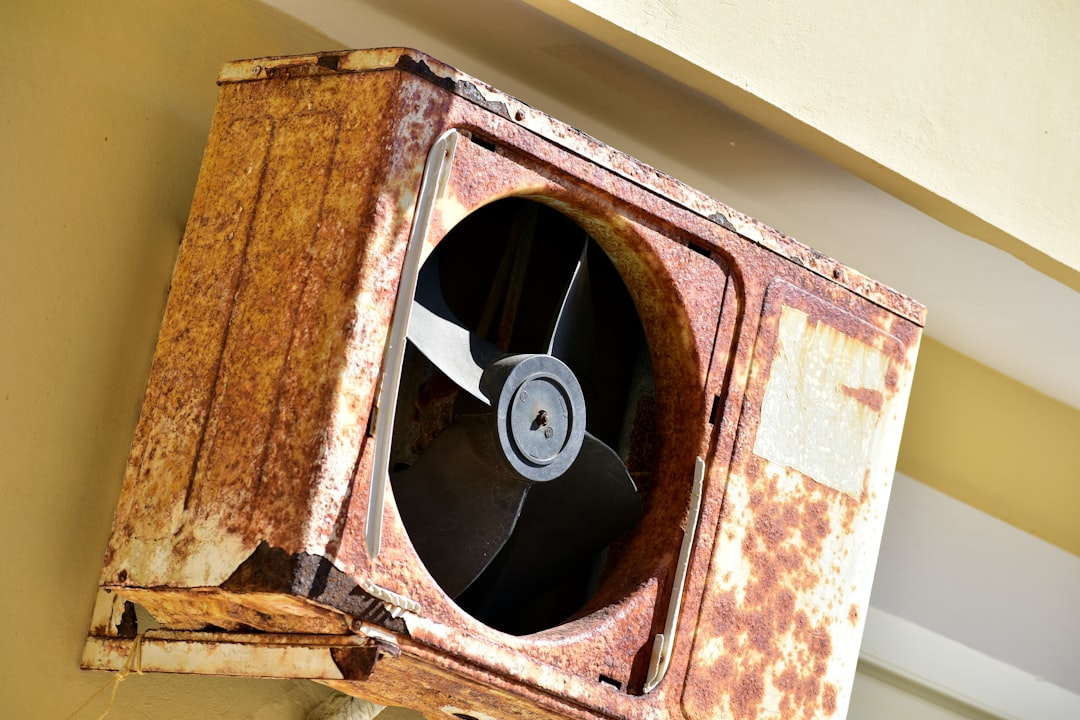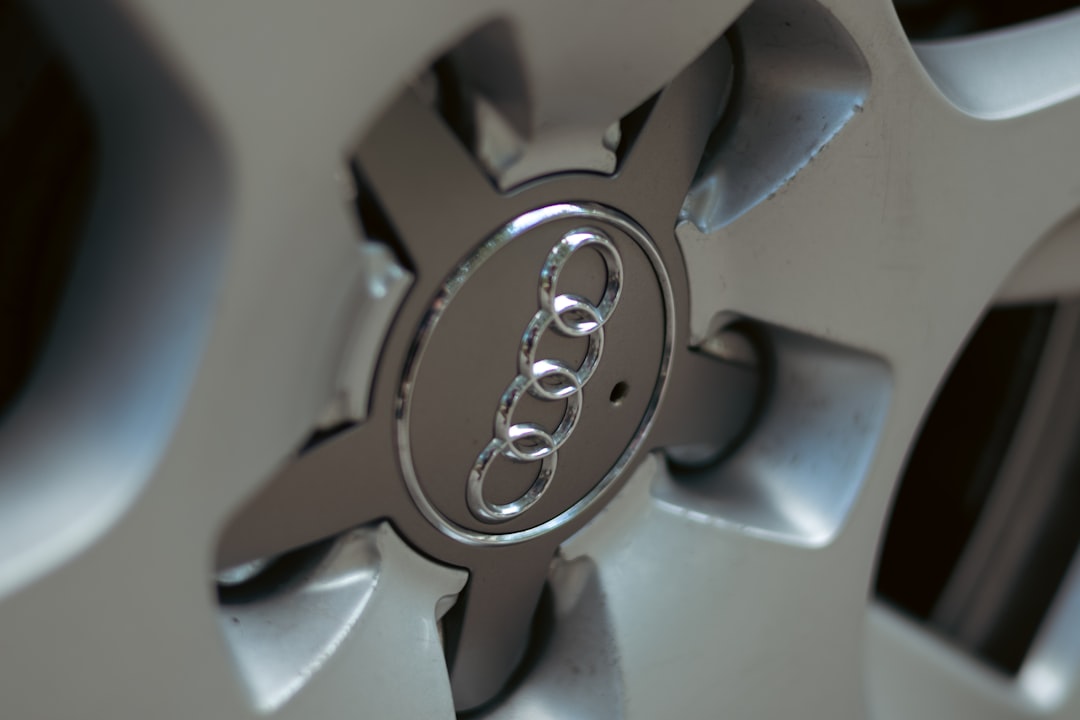

Engage prospects with a scan and streamline customer engagement with FREE QR code marketing tools by Sona – no strings attached!
Create a Free QR CodeFree consultation

No commitment

Engage prospects with a scan and streamline customer engagement with FREE QR code marketing tools by Sona – no strings attached!
Create a Free QR CodeFree consultation

No commitment
The fan repair services market is evolving rapidly as homeowners and businesses seek fast, reliable solutions for fixing ceiling fans, improving energy efficiency, and maintaining optimal airflow. Yet, critical pain points persist, such as missed opportunities when potential customers research repairs but never reach out, or when vital details about interested leads remain off the radar due to outdated tracking methods.
Today’s digitally savvy customers expect instant access to service details, how-to guides, and scheduling without navigating complicated web searches or downloading apps. It is common for a homeowner to abandon their search for repairs if an answer is not instantly accessible or if booking an appointment requires too many steps. QR codes have emerged as a strategic tool to bridge these frustration points, making it simple for anyone to access maintenance tips, book repair services, or request quotes by scanning a code on a flyer, invoice, or product label, while offering businesses critical insights into previously anonymous interest. See Sona QR’s marketing guide.
By integrating QR code technology, fan repair services can turn persistent challenges, such as the inability to follow up on high-intent inquiries or missed upsell opportunities, into growth opportunities. This approach streamlines access, drives conversions, and collects valuable engagement data, while enhancing the customer experience from the first sign of trouble to a completed repair. Solutions like real-time engagement tracking and CRM integrations are now available to help service providers personalize follow-ups, nurture repeat business, and ensure no valuable prospect slips through the cracks. See Sona QR’s product overview for capabilities.

QR codes are a powerful bridge between physical touchpoints and digital service workflows, simplifying everything from quote requests to troubleshooting ceiling fans, while overcoming persistent obstacles such as missing high-intent prospects who do not submit web forms. When placed thoughtfully across your customer journey, QR codes transform static materials into interactive entry points that drive measurable outcomes. Explore Sona QR’s use case library.
Begin by identifying the workflows where your team loses time or visibility. Printed brochures, paper work orders, and manual sign-up sheets limit your ability to track interest or respond quickly. Replacing these analog processes with QR-enabled flows ensures that you capture every signal of demand and reduce friction for customers who want immediate answers. With a single scan, a homeowner can reach a troubleshooting checklist, book a service call, or request a quote, and your team gains a trackable signal tied to time, place, and context. Using Google Forms QR codes makes this simple.
A holistic QR solution allows you to create, manage, and report on codes in one place. Providers that adopt structured, real-time engagement workflows are closing the gaps created by missed follow-ups or untracked interest and are converting more of their everyday interactions into revenue.

Fan repair services operate in a fast-moving, needs-based market where customers want quick solutions and confidence in the provider they choose. A broken or noisy ceiling fan is a time-sensitive issue, and the first vendor to provide an easy path to answers typically wins the business. Historically, analog materials such as appointment cards, invoices, catalogs, and store signage did not capture who showed interest or what prompted them to reach out. QR codes resolve this by turning every physical asset into a direct path to action and a source of data. See Sona’s offline attribution guide.
These codes are especially useful for fan repair because they align with the moments customers seek help: hearing a wobble, noticing reduced airflow, or dealing with a sudden failure before an event. A QR code on a receipt, mailer, or technician badge removes the need to search online and instead offers one-tap access to booking, troubleshooting, or support. On the business side, each scan is a measurable signal that can be routed to a CRM, attributed to a campaign, and used to drive targeted follow-up. For background, this QR code research outlines common pros and cons.
Evaluating how QR codes can be embedded within every step of your customer journey helps you systematically resolve blind spots that have historically impeded growth. From first contact to completed service, you can now measure what drives action and refine your approach continuously.

Not every scan needs to go to a website. Different moments call for different QR formats, and fan repair providers benefit from a mix that supports service, sales, and support. Choosing the right destination for each code ensures customers reach the right resource at the right time without confusion.
Start by mapping your most common interactions. Saving contact details, booking service, and requesting parts each require a different action, and QR formats can be customized to those goals. Dynamic codes are particularly helpful because you can update destinations after printing and collect engagement data for refinement over time.
Dynamic QR codes are ideal for promotions, rotating educational content, and campaigns that require data. Static codes work for unchanging information like warranty PDFs or evergreen safety instructions. Most fan repair providers will use a blend of both, with dynamic codes handling marketing and static codes handling compliance and reference.

Growth in fan repair services often hinges on capturing micro-moments of interest that occur offline. A customer opens a drawer and finds an old invoice, walks past your service van, or reads a maintenance postcard during spring cleaning. If those touchpoints do not provide a direct and trackable path to action, many of those moments will be lost. Strategic QR placement turns your existing assets into measurable lead channels.
Begin by auditing your physical footprint. Identify which items customers see most often and where intent is highest. Then assign unique, campaign-specific QR codes to each placement so you can attribute scans precisely. Pair each code with a clear value proposition so people know exactly what they will get when they scan.
By focusing QR deployment on high-visibility, high-intent surfaces, you build a scalable engine for lead capture that keeps working between visits, calls, and campaigns.

Use-case mapping is the fastest path to value. Rather than scattering codes randomly, tie each one to a specific moment in your service cycle so the action is obvious and the outcome is measurable. In fan repair, three use cases consistently stand out for both customer convenience and revenue impact.
The first category removes friction. Customers do not want to wait on hold or hunt for the right web page. The second category improves your operational efficiency by collecting essential diagnostics up front. The third category accelerates repeat business and referrals by keeping your brand top-of-mind after the job.
When you align each code with a clear job to be done, the experience feels helpful rather than promotional. You will also create more accurate attribution for marketing and more predictable demand for operations.
Every scan carries intent, context, and timing. If you deploy unique QR codes across your touchpoints, you can automatically segment your audience by their behavior and serve follow-ups that match their needs. For fan repair services, this is especially powerful because your market includes several distinct groups: homeowners, renters, property managers, and commercial facility teams. For strategy, read Sona’s intent data guide.
Start by tagging each code with the journey stage and use case. For example, distinguish between an awareness scan on a mailer and a conversion scan on an invoice. Then sync those tags into your CRM so you can automate nurturing sequences or create custom ad audiences. With the right categories in place, your campaigns become smarter every time someone scans.
With a platform like Sona QR, each code becomes a smart entry point into your funnel. As your dataset grows, you can retarget based on real behavior rather than assumptions, improving both customer experience and marketing efficiency.
QR codes amplify every channel you already use. They turn static impressions into interactive journeys and enrich your analytics with offline context. For fan repair providers who rely on local visibility and service quality, this connected approach is a competitive advantage. Get a refresher in Sona’s multi-touch attribution.
Think of QR codes as the connective tissue across your marketing stack. Add them to print, social, events, and signage to capture demand wherever it appears. With centralized management, you can see which placements generate scans, which scans convert, and how to adapt in real time for better results.
By bridging offline and online, QR codes make your marketing spend smarter and your customer journeys smoother. With a centralized platform like Sona QR, you can manage codes, monitor performance, and sync scan data to your CRM and ad platforms.
Launching a QR program does not require a full rebuild of your marketing stack. A clear plan and the right tools will help you move from concept to measurable impact quickly. Begin with a single use case, prove value, and then scale across your most visible surfaces.
Below is a simple framework for fan repair providers. Customize placements and CTAs to match your brand, target audience, and local market dynamics. Use dynamic codes for any campaign that will require updates or attribution, and keep static codes for fixed resources like safety instructions or warranty PDFs.
Identify a business problem with clear impact. For example, reduce manual phone inquiries for common DIY fixes, increase booked appointments from direct mail, or increase review collection after service completion. Make the action obvious for the customer and measurable for your team.
Choose between static and dynamic codes based on your goals. Static codes are best for content that will not change. Dynamic codes are trackable and editable, which makes them ideal for campaigns, promotions, and operational dashboards.
Good design improves scan rates. Your code should be easy to spot, clearly labeled, and visually aligned with your brand. Always test in real conditions to avoid surprises in the field.
Roll out to a focused set of placements first, measure results, and iterate. Consistency across touchpoints builds familiarity and encourages scanning over time.
Monitoring performance is where QR campaigns turn into growth engines. Use your dashboard to analyze scan patterns, compare placements, and improve underperforming assets.
A centralized QR solution like Sona QR brings these steps under one roof. You can spin up codes in minutes, monitor outcomes in real time, and integrate scan data with your CRM for timely, personalized follow-up.
Many fan repair providers struggle to connect marketing investments to booked appointments and completed jobs. Counting calls or website visits alone does not reveal what caused a customer to take action. QR analytics fill this gap by tying real-world engagement to downstream outcomes and revenue.
Start with visibility. When each code is unique to its placement, you can see exactly which assets drive scans and how those scans convert. Add UTM parameters to landing pages, connect your codes to your CRM, and align internal reporting so the entire funnel is visible. Over time, patterns emerge that inform where to invest, what to improve, and when to pivot.
With Sona QR and Sona.com, you can go beyond basic scan counts. Sona QR captures detailed engagement data and pushes it into your CRM. Sona.com adds identity resolution and multi-touch attribution so anonymous scans become known buyers over time, and you can tie QR engagement to pipeline and revenue. See Sona’s account identification guide. The result is a performance-focused approach where each code is not just a link but a measurable part of your growth strategy.
Sustained results come from disciplined execution. The most successful fan repair teams build QR codes into their standard operating procedures, train staff to promote scanning, and automate the follow-ups that move customers from interest to action.
Focus on a small set of best practices that match your most common media and customer journeys. Reinforce these habits in your team, review performance monthly, and keep iterating. Over time, QR engagement becomes a reliable, compounding source of demand.
Creative deployments can lift performance. For example, place a small QR sticker under the fan canopy that links to the exact model’s manual and your support chat, or add a “Scan for Emergency Repair” code on after-hours door hangers like QR door hangers. These thoughtful placements show up when customers need them most.
Real-world campaigns prove how small changes add up to real gains. Providers that combine helpful content with precise attribution see more bookings, better customer satisfaction, and a healthier pipeline. The examples below show how to embed QR codes where they can have the greatest effect.
Start with a pilot and measure everything. Choose a few placements that see frequent exposure, such as invoices and uniforms, then expand to vehicles, storefronts, and packaging. As you learn which messages and offers work, you can scale your best ideas across neighborhoods or service areas.
Each scenario addresses common frustrations like lost follow-up or untracked engagement. By making each scan useful and trackable, you embed data-driven improvements into your customer journey.
Turning everyday service touchpoints into actionable, measurable lead channels is a practical and powerful shift for fan repair providers. QR code workflows remove friction for customers and create new visibility for teams, so you can see who is engaging, what they need, and when to follow up. By transforming static interactions into dynamic, trackable journeys, you finally resolve persistent challenges such as missed leads, incomplete account data, and delayed outreach.
Here is what QR strategies deliver for fan repair teams:
With Sona QR, you can generate and manage codes across all your assets, monitor performance in real time, and sync scan data with your CRM. Pair Sona QR with Sona.com to resolve identities, attribute revenue, and build unified buyer journeys. Start with one high-impact use case, such as scan-to-book on invoices, then scale your wins across your entire service footprint. Start creating QR codes for free.
QR codes have transformed fan repair services from traditional, time-consuming processes into streamlined, customer-centric experiences. Whether it’s facilitating instant access to troubleshooting guides, scheduling repairs, or providing real-time service updates, QR codes eliminate barriers and deliver seamless interactions that enhance customer satisfaction and retention. Imagine your customers scanning a code to instantly connect with expert help or book a service appointment—turning every interaction into a high-value opportunity.
With Sona QR, fan repair businesses gain the power to create dynamic, trackable QR codes that update instantly without reprinting, enabling you to monitor engagement and optimize your service touchpoints in real time. Connect every scan to meaningful outcomes like increased bookings and repeat business, ensuring no lead or opportunity slips through the cracks.
Start for free with Sona QR today and revolutionize how your fan repair service engages customers—making every scan a step toward faster repairs and stronger relationships.
You can find reliable fan repair services by scanning QR codes on flyers, invoices, or product labels that provide instant access to booking options, troubleshooting guides, and contact details without complicated searches.
Common issues include wobbling, capacitor failure, wiring problems, reduced airflow, and sudden fan failure, which often prompt customers to seek troubleshooting or professional repair services.
The article does not specify exact repair costs but suggests that QR codes can provide instant quotes and pricing information for ceiling fan repairs when scanned.
Signs include hearing a wobble, noticing reduced airflow, unusual noises, or sudden failure of the fan, indicating it may need troubleshooting or repair.
Maintaining your ceiling fan can be supported by scanning QR codes that link to maintenance checklists, DIY guides, and seasonal tune-up offers to help prevent future repair needs.
Use Sona QR's trackable codes to improve customer acquisition and engagement today.
Create Your FREE Trackable QR Code in SecondsJoin results-focused teams combining Sona Platform automation with advanced Google Ads strategies to scale lead generation

Connect your existing CRM

Free Account Enrichment

No setup fees
No commitment required

Free consultation

Get a custom Google Ads roadmap for your business






Launch campaigns that generate qualified leads in 30 days or less.
